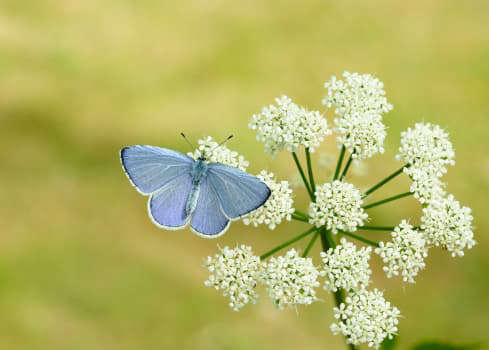
The Big Butterfly Count, running from Friday 15th July to Sunday 7th August, is a UK-wide survey open to everyone, of any age, living in towns, cities or the countryside.
BIG BUTTERFLY COUNT 2022: TIME RUNNING OUT TO SAVE SOME OF UK’S BEST-LOVED SPECIES
- World’s Biggest survey of its kind launches as scientists warn of catastrophic extinction threats
- Last year’s Count saw record participation but lowest ever number of butterflies recorded
- 50% of Britain’s butterfly species now on the Red List – threatened with extinction
- Interviewees: Media Medic Dr Amir Khan and Butterfly Conservation’s Dr Zoë Randle
The Big Butterfly Count, running from Friday 15th July to Sunday 7th August, is a UK-wide survey open to everyone, of any age, living in towns, cities or the countryside.
Butterfly Conservation is today urging the nation to help protect the UK’s butterflies by taking part in the annual Big Butterfly Count, the world’s biggest Citizen Science survey of its kind.
Last year’s Count – in which the public is asked to spend 15 minutes recording the number of butterflies and day-flying moths – saw the lowest level of sightings of butterflies and moths since the first count in 2009. This was despite a record 150,000 counts being undertaken in 2022.
Earlier this year the wildlife charity revealed that half of Britain’s remaining butterfly species are now on the Red List and are threatened or near threatened with extinction. Even some species not yet listed as threatened on the Red List are suffering great declines. For example, the Small Tortoiseshell, once a familiar sight in gardens throughout the country, has declined by 79% since 1976.
Taking part in the Big Butterfly Count is described as taking ‘nature’s pulse’ - butterflies and moths are a vital indicator of the health of our environment. A reduction in their numbers is a cause for serious concern.
The data submitted by everyone is analysed by scientists, allowing them to better execute conservation efforts. In recent years Butterfly Conservation has helped to save two species from extinction in the UK and halted the decline of many others, proving that with the right information and targeted action, species can be brought back from the brink.
However, rising temperatures and more frequent extreme weather events are having an effect on butterflies. The Count reveals that some species could be moving further north as the south warms, but some species whose populations are reducing seem to be less able to colonise new areas.
Butterfly Conservation’s Ambassador, Dr Amir Khan, is encouraging us all to take part in the Count. As a huge advocate of the benefits of the Great Outdoors, he believes taking part in the Big Butterfly Count is beneficial to our wellbeing. Just a short amount of time spent in the natural world can alleviate stress and connecting with nature can help us all feel happier and more energised.
Butterfly Conservation’s Senior Surveys Officer, Dr Zoë Randle, is also available to explain how the survey is essential in giving the charity the tools needed to protect these beloved insects.
The Big Butterfly Count, running from Friday 15th July to Sunday 7th August, is a UK-wide survey open to everyone, of any age, living in towns, cities or the countryside. Taking part requires spending just 15 minutes in an outdoor space counting the amount and type of butterflies, and some day-flying moths.
Butterfly Conservation is the UK charity dedicated to saving butterflies, moths and our environment. Our research provides advice on how to conserve and restore habitats. We run projects to protect more than 100 threatened species and we are involved in conserving hundreds of sites and reserves. www.butterfly-conservation.org @savebutterflies
The Big Butterfly Count is a UK-wide survey, run by Butterfly Conservation, aimed at helping us assess the health of our environment simply by counting the amount and type of butterflies (and some day-flying moths) we see. It’s so easy to do and is a fantastic activity for people from 3 to 103 years. All you have to do is spend 15 minutes in an outdoor space during sunny conditions and count the types and number of butterflies you see.
Find out more at www.bigbutterflycount.org.


